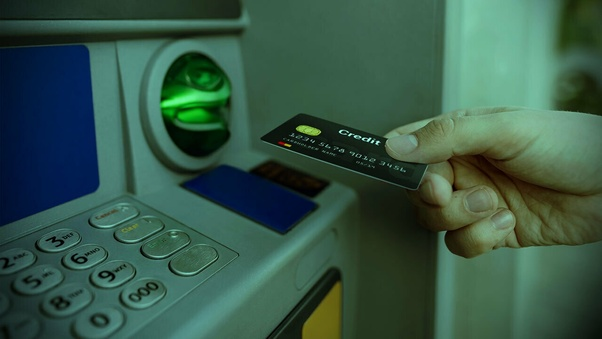In the realm of banking, understanding the nuances of various transactions can significantly enhance financial management, both for individuals and businesses. One such transaction type that often appears on bank statements and may puzzle account holders is the counter credit. Despite its frequent occurrence, many people are not fully aware of what a counter credit is or the implications it has on their financial standing.

Counter credits are essential for a variety of banking transactions, offering a secure and documented method for depositing funds directly at a bank counter. This blog aims to demystify the concept of counter credits, explaining their function, importance, and impact on bank accounts.
By grasping this fundamental aspect of banking, customers can manage their finances more effectively, ensuring they can maximize the benefits while minimizing potential misunderstandings or errors in their account management.
Understanding Counter Credits
A counter credit is a type of banking transaction that occurs when a deposit is made directly at a bank’s teller counter, rather than through an ATM or an electronic transfer. On a bank statement, a counter credit typically appears labeled explicitly as counter credit or a similar notation, indicating that the transaction was manually processed by a bank employee.

This method is particularly common for cash deposits but can also apply to checks or other transfer documents handed over for immediate credit to the customer’s bank account. Counter credits are crucial in ensuring that funds are available more swiftly compared to some other deposit methods, providing both clarity and immediacy in financial management.
How Counter Credits Work?
The process of a counter credit begins when a customer approaches a bank teller with cash, checks, or other deposit mediums. The teller verifies the amounts, authenticates the depositing customer’s account details, and processes the deposit directly.

This interaction is recorded as a counter credit on the customer’s bank statement, often showing up almost immediately, depending on the bank’s processing times and policies. This method not only ensures the security of the deposit by handling it face-to-face but also allows for immediate resolution of any discrepancies that might arise during the transaction.
For many customers and businesses, counter credits provide a reliable and traceable method of depositing funds, ensuring their money is promptly credited and accurately reflected in their account balances.
The Role of Counter Credits in Banking Transactions
Types of Transactions Involving Counter Credits
Counter credits are versatile and can be used in a variety of banking transactions. Primarily, they are used for depositing cash or checks at a bank teller, which is ideal for customers who need immediate confirmation that their funds have been received and recorded.
Beyond straightforward deposits, counter credits are also utilized for certain types of payment transactions, such as paying a credit card bill in person or depositing money directly into a third party’s account. Businesses frequently use counter credits for depositing daily takings, ensuring that large sums of money are handled securely and entered into their accounts without delay.
This method is particularly valuable in scenarios where accuracy and immediate proof of deposit are critical.
Comparing Counter Credits and ATM Deposits
While both counter credits and ATM deposits are popular for adding funds to bank accounts, there are distinct differences and benefits between the two.

Counter credits offer a personal interaction with a bank teller, providing an opportunity for immediate clarification and assistance, which is particularly beneficial for complex transactions or when immediate account crediting is necessary. They also allow for the deposit of non-standard forms of payment that ATMs cannot accept, such as large volumes of coins or damaged bills.
On the other hand, ATM deposits provide convenience and flexibility, allowing customers to deposit funds outside of regular banking hours. However, funds from ATM deposits might not be available immediately and can be subject to verification delays, especially when depositing checks.
This comparison highlights that while ATMs offer convenience, counter credits provide immediacy and personal service, making them indispensable for many banking customers.
Impact on Your Bank Account
How Counter Credits Affect Available Balance
Counter credits can have an immediate positive impact on your available balance. When a deposit is made over the counter, the funds are typically credited to your account faster than through other methods such as ATM or mobile check deposits.
This is especially crucial for those who need to ensure sufficient funds are available to cover upcoming transactions without delay. In many banks, the funds from a counter credit may be available immediately or within the next business day, depending on the bank’s policies and the nature of the deposit.
This immediacy helps prevent overdraft fees and provides more accurate financial planning capabilities. It ensures that account holders can rely on their bank statements to reflect their true financial position in almost real-time.
Regulatory Requirements and Counter Credits
The processing of counter credits is subject to specific regulatory requirements to ensure security and accuracy in financial transactions. These regulations govern everything from the identification process required at the time of deposit to the timing of fund availability and the reporting of large cash transactions to prevent money laundering.
For instance, banks must comply with the Bank Secrecy Act in the U.S., which requires them to report large cash deposits over a certain threshold. Additionally, the Expedited Funds Availability Act dictates the maximum allowable hold times for different types of deposits, ensuring that customers have timely access to their funds.
Compliance with these regulations not only protects the banking institution but also safeguards the customer’s financial interests, making counter credits a reliable and secure transaction method.
Impact on Your Bank Account
How Counter Credits Affect Available Balance
Counter credits can significantly impact the available balance in a customer’s bank account. When a deposit is made via counter credit, the funds are typically available almost immediately. This immediate availability is especially important for businesses or individuals who need to ensure that their account balances are sufficient to cover upcoming transactions without delay.
For instance, depositing cash or a check at the bank’s counter allows an account holder to swiftly meet or exceed a minimum balance requirement or prevent overdraft fees. This method ensures that the funds are not only deposited but also reflected in the available balance as soon as the transaction is recorded, thus enhancing the account holder’s capacity to manage cash flow effectively.
Regulatory Requirements and Counter Credits
The processing of counter credits is influenced by several regulatory requirements designed to ensure the security and accuracy of financial transactions. These regulations include the Bank Secrecy Act and anti-money laundering laws, which require banks to verify the identity of individuals making large deposits and to report any suspicious activities.
Additionally, banks must adhere to the regulations set forth by financial authorities that stipulate how quickly funds must be made available in a customer’s account after a deposit is made. For example, in the United States, the Federal Reserve’s Regulation CC governs the availability of funds and aims to standardize hold periods, ensuring consumers have timely access to their deposited money.
These regulatory frameworks ensure that while counter credits offer convenience and immediacy, they also comply with necessary legal standards to protect both the institution and the customer.
Benefits of Counter Credits
Speed of Transactions
One of the most significant benefits of counter credits is the speed with which transactions are processed. Unlike electronic transfers or ATM deposits that might involve a waiting period for funds verification, counter credits are processed almost instantaneously by bank tellers. This immediate processing is particularly beneficial for urgent transactions requiring instant financial resolution.
It ensures that funds are available for use right away, which is crucial for time-sensitive payments or when quick access to funds is necessary to capitalize on business opportunities. This rapid transaction time not only enhances convenience but also improves cash flow management for both individuals and businesses.
Ease of Record-Keeping
Counter credits also simplify the record-keeping process. When deposits are made through a bank teller, they are immediately entered into the bank’s system and reflected on the customer’s account statement. This provides an instant, verifiable record of the transaction, which is invaluable for maintaining accurate and up-to-date financial records.
Furthermore, the receipt issued by the teller at the time of the transaction serves as an additional proof of deposit, useful for personal record-keeping or in business settings where financial transparency and audit trails are paramount. This level of documentation is especially important where precise financial management and regulatory compliance are required.
How to Monitor and Manage Counter Credits
Best Practices for Business Owners
For business owners, effectively managing counter credits is crucial for maintaining financial health and operational efficiency. One key practice is to train staff involved in banking transactions on the correct procedures for making counter deposits, ensuring accuracy and security. Additionally, maintaining a regular schedule for deposits can help manage cash flow more predictably.
It’s also advisable to utilize business banking tools provided by financial institutions, such as digital banking platforms that allow tracking of transactions in real-time. Keeping detailed records and promptly reconciling bank statements with internal financial records will ensure that discrepancies are quickly identified and addressed, safeguarding the business’s financial integrity.
Tips for Regular Bank Customers
For regular bank customers, monitoring and managing counter credits involves a few straightforward practices. First, it’s important to retain all receipts and documentation related to counter transactions. This habit is vital for verifying the accuracy of bank statements when they arrive. Customers should regularly review their bank statements to ensure that all counter credits are recorded correctly.
Engaging with features like online banking or mobile banking apps can also enhance the ability to track these transactions efficiently. These platforms often provide instant notifications and detailed transaction histories, which help customers stay informed about their financial status and act quickly if issues arise.
Navigating Bank Transactions: Understanding Various Deposit Methods
When managing finances through a bank, understanding various deposit methods such as counter deposits, cash deposits, and electronic fund transfers is crucial. A counter credit, often seen on your bank statement, indicates a deposit made directly at the bank’s counter. This could involve depositing money into a savings account or handling a business’s daily cash intake.
Each method has its procedures; for instance, cash deposits require the customer to fill out a deposit slip, whereas electronic fund transfers are processed without physical paperwork, offering convenience and speed.
Most banks offer these many options to accommodate different customer needs, including the facility for direct deposits, which automates the transfer of salaries or other regular income into your bank account, bypassing the need for manual deposits.
Each transaction type, from simple withdrawals to setting up maturity dates for fixed deposits at interest rates that maximize returns, involves specific steps and considerations. Familiarizing oneself with these can greatly enhance one’s ability to manage personal or business finances efficiently.
Effective Financial Management: Leveraging Bank Tools and Contacts
To optimize the benefits of various banking transactions, it’s essential to engage effectively with the tools and contacts available through your bank. Utilizing deposit slips for tracking transactions, or consulting with bankers about the best ways to manage liabilities and investments, can provide clarity and control over financial decisions.
Customers should not hesitate to contact their bank for advice on services like setting up direct deposits, understanding the terms of different savings accounts, or learning more about the maturity dates and interest rates associated with their deposits.
Moreover, many banks provide online banking options that simplify managing accounts from depositing money to withdrawing funds securely and conveniently. This digital access allows customers to handle their finances on the go and keeps them informed about their financial status through instant updates and notifications.
Regular interactions with bank staff and making use of educational resources provided by the bank can also help in understanding the nuances of financial products and services, thus empowering customers to make informed decisions that align with their financial goals and obligations.
